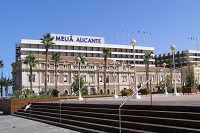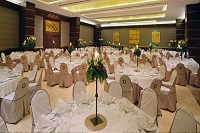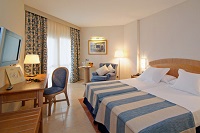Venue & Hospitality
Welcome to the Official Attendee Housing Site for the International Conference on Sustainable Bioplastics , which will be held in Alicante, Spain. The Conference will take place in the following dates and location.
Address:
Meliá Alicante Hotel
Plaza del Puerto, 3
Alicante 03001
Spain
Conference Dates: November 10-11, 2016
Hotel Services & Amenities
- Audio/Visual Equipment Rental.
- Business Center.
- Business Phone Service.
- Complimentary Printing Service.
- Express Mail.
- Fax.
- Meeting Rooms.
- Office Rental.
- Photo Copying Service.
- Secretarial Service.
- Telex.
- Typewriter.
- Video Conference.
- Video Messaging.
- Video Phone.
- ATM.
- Baggage Storage.



Transportation
Driving Directions to
Meliá Alicante Hotel from Alicante Airport, Spain
- Head south
- Slight left
- Continue straight
- Take the slip road onto N-338
- Merge onto N-338
- Take the N-332slip road on the left to Alacant/Alicante
- Continue onto Av. Elche
- At the roundabout, take the 2nd exit onto Av. Loring
- Continue onto Av. Conde de Vallellano
- Turn right onto Muelle Levante
- At the round about, take the 3rd exit and stay on Muelle Levante
Route Map
About City
Alicante, or Alacant is a city and port in Spain on the Costa Blanca, the capital of the province of Alicante and of the comarca of Alacantí, in the south of the Valencian Community. It is also a historic Mediterranean port. The population of the city of Alicante proper was 334,329, estimated as of 2011, ranking as the second-largest Valencian city. Including nearby municipalities, the Alicante conurbation had 462,281 residents. The population of the metropolitan area was 771,061 as of 2011 estimates, ranking as the eighth-largest metropolitan area of Spain.
Alicante enjoys mild winter temperatures, hot summers and little rain, concentrated in equinoctial periods. Scientists tend to classify the climate of Alicante region according to Köppen climate classification as semi-arid (BSk). On average the temperature ranges between 17.0 °C (63 °F) and 6.3 °C (43 °F) in January, and between 30.8 °C (87 °F) and 21.2 °C (70 °F) in August, with an average annual temperature of 18.3 °C (65 °F). Daily variations in temperature are generally small because of the stabilising influence of the sea, although occasional periods of westerly wind can produce temperature changes of 15 °C (27 °F) or more. Seasonal variations in temperature are also relatively small, meaning that winters are mild and summers are hot.
Amongst the most notable features of the city are the Castle of Santa Bárbara, which sits high above the city, and the port of Alicante. The Santa Bárbara castle is situated on Mount Benacantil, overlooking the city. The promenade Explanada de España, lined by palm trees, is paved with 6.5 million marble floor tiles creating a wavy form and is one of the most lovely promenades in Spain. Barrio de la Santa Cruz is a colourful quarter of the old city, situated on the south-west of Santa Bárbara castle. Its small houses climb up the hill leading to the walls and the castle, through narrow streets decorated with flags and tubs of flowers.
L'Ereta Park is situated on the foothills of Mount Benacantil, on the way to the castle. It runs from the Santa Bárbara castle down to the old part of Alicante and consists of several levels, routes, decks and rest stops which offer a panoramic view overlooking the city.Just a few kilometers from Alicante on the Mediterranean Sea lies Tabarca island. What was once a haven for Barbary pirates is now a beautiful tourist attraction.
There are a dozen museums in Alicante. On exhibition at the Archaeological Museum of Alicante (MARQ) are local artifacts dating from 100,000 years ago till the early 20th century. The collection is divided into different rooms representing three divisions of archaeological methodology: ground, urban and underwater archaeology, with dioramas, audiovisual and interactive zones. The archaeological museum won the European Museum of the Year Award in 2004. Gravina Museum of Fine Arts presents a number of paintings and sculptures from the 16th century to 19th century. Asegurada Museum of Contemporary Art houses a major collection of twentieth-century art, composed mainly of works donated by Eusebio Sempere.
